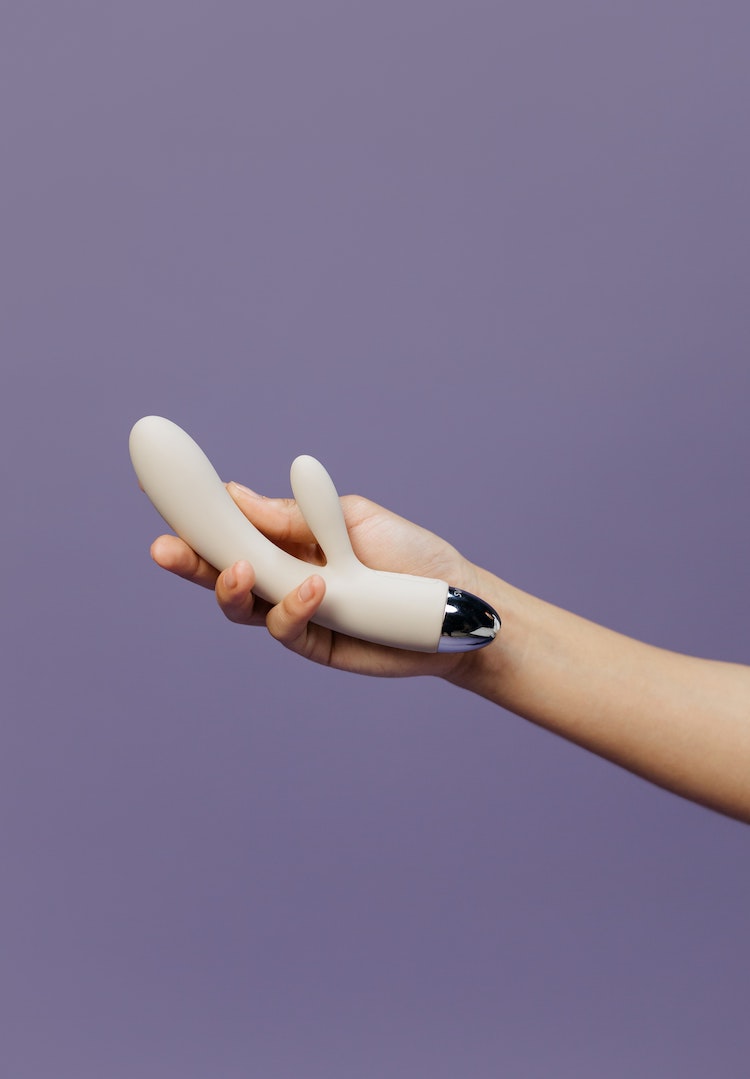Everything you need to know about ‘pulling out’ as contraception
WORDS BY IZZY WIGHT
The low-down on the withdrawal method.
When I think of unprotected sex, my mind often replays that painful sex ed scene with Coach Carr in Mean Girls. While his stance on sex resulting in imminent death seems a little extreme, it is admittedly reminiscent of my personal experience in high school health classes, when I was warned with grave seriousness about the dangers of premarital coitus (it was a Catholic school).
Among the many sex-related sins one could commit, we were told unprotected sex would result in a guaranteed teenage pregnancy (and a pregnancy out of wedlock, no less). As we got older, of course, that narrative was slightly altered.
For more sex advice, head on over to our Life section.
We were introduced to the ‘pull out’ method. For some of my friends who struggled to find the right form of contraception, it seemed like a great way to avoid the side effects of hormonal birth control.
Did the pull out method come with a pregnancy scare or two? Of course, but at least they didn’t have to suffer the side effects of the pill, Implanon or IUD. Most women can sympathise, with so many of us cycling through the list of birth control options looking for one that doesn’t make us want to curl up in the fetal position.
It’s also widely understood that going condom-free (and in turn, usually opting for the pull out method) is often encouraged by men, coupled with pleading claims that it ‘feels better’ – which I’m sure it does.
But according to Dr Raelia Lew, CREI Fertility specialist, gynaecologist and the Director of Women’s Health Melbourne, “it’s estimated that one in five couples using the pull out method will conceive an accidental pregnancy over 12 months”. So is all of this worth the chances of an unwanted pregnancy or sexually transmitted infection (STI)?
What is the ‘pull out’ method?
Put simply, the ‘pull out’ or withdrawal method of contraception involves the ‘pulling out’ of a penis from a vagina before ejaculation.
According to Dr Raelia, the pull out method is medically known by the Latin name coitus interruptus (quite fitting, really) and “a goal of the withdrawal technique is to prevent pregnancy by trying to stop sperm entering a woman’s reproductive tract, finding an egg and ultimately making a baby”.
As we touched on earlier, it’s appealing to people for a few reasons. It doesn’t involve hormonal contraception (which if you’ve ever had issues with hormonal birth control, can be a very attractive point), is free and requires no prescription. As Dr Raelia explains, “some couples don’t like to use condoms either, due to claims they may cause chafing, irritation or reduce sensation.
“It goes without saying that to prevent STIs from spreading, like them or not, condoms are the smart method to use with a casual/non-monogamous partner or in a new relationship before you have both been fully checked out for uninvited friends like syphilis and chlamydia.”
The downsides
While it might sound good on paper, the pull out method comes with some caveats (cums with some caveats, if you will). “As a form of contraception, the pull out technique has a much higher failure rate than other methods,” Raelia tells me.
“Compared to both hormonal and barrier contraception alternative methods, this contraceptive failure rate is actually quite high.” In terms of avoiding pregnancy, the withdrawal method is risky for a few reasons. Firstly, there’s the obvious factor of human error.
Removing the penis at exactly the right moment takes some skill and according to Science Daily, the first drops of semen to emerge are the most potent with swimmers (not an exact quote). Pulling out is only effective about 78 per cent of the time, and pre-cum plays a significant role in this statistic.
“Prior to ejaculation, pre-ejaculatory fluid escaping the tip of the penis can in fact contain sperm and it is actually possible to become pregnant from contact of this fluid (non-technically known as ‘pre-cum’) with a woman’s cervix,” Dr Raelia explains. “This means pregnancy can occur, even when what a man thinks is a full ejaculation occurs outside his partner’s vagina.”
The contraception question
So if you don’t want to run the risk of getting pregnant, it might be time to revisit your options. The easiest non-hormonal option is, of course, the humble condom.
If you’re opting for the withdrawal method simply because it ‘feels better’ for your partner and they are reluctant to wear a condom, this is your reminder that you can – and should – stand your ground. (If you need help with that, head here.)
In terms of other options, Dr Raelia tells me “there are many more reliable methods of contraception or birth control available compared to the ‘pull out’ method. These include hormonal methods like the oral contraceptive pill, the progesterone-only minipill, the progesterone-only rod or IUD, the combined hormonal vaginal ring and the copper (non-hormonal IUD), to mention a few.”
If unprotected sex has already occurred within a certain number of hours, the over-the-counter ‘morning after pill’ is also an option but it’s “definitely best not to rely on this approach as your usual method of contraception”, Dr Raelia tells me.
If it all feels a little overwhelming, it’s a good idea to have an open discussion about contraception options with your doctor. “There is usually a reasonable reliable contraceptive option available to suit most people’s needs,” Dr Raelia says. “Unplanned pregnancy can cause distress, can put you in a very difficult situation and is best avoided until a pregnancy is thoughtfully desired.”
Bodily autonomy
The conversation about proper contraception and reproductive rights is really important, particularly in the world’s current political climate. Where possible, educate yourselves and others about the options available to help prevent STIs and unplanned pregnancies.
As Dr Raelia says, “having control over our fertility, current and future reproductive function is considered a basic human right. As a doctor, I believe a woman should have full bodily autonomy and [I] support her right to seek an abortion if she finds herself unexpectedly pregnant when not in a position to have a baby.
“At the same time, I know how difficult a position like that can be for a person. Knowledge of and access to reliable contraception and prevention of unplanned pregnancy is 100 per cent the better alternative.”
For more information on the withdrawal method, head here.













